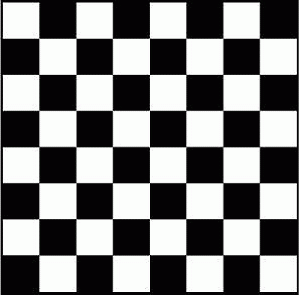The manner in which groups of warp yarns are raised by the harnesses to permit the insertion of the filling yarn determines the pattern of the weave, and in large measure the kind of fabric produced. Weave patterns can create varying degrees of durability in fabrics, adding to their usefulness and also to their appearance. In a simple weave construction, consisting of the filling going under one warp and over the next, two harnesses are needed: one to lift the odd-numbered warp yarns, and econd to lift the even-numbered warp yarns. More than two harnesses are required for advanced weaves, and as many as forty for figured weaves. The most commonly weave structure used for maximum woven fabrics are plain weave twill weave and satin weave, with some variation. There are some valuable structures and designs are also achieved from the following weaves: gauze, pile, double cloth, lappet, dobby, swivel, and Jacquard.
Variations of Plain Weave:
Basket weave is one of the most popular woven fabric structure and design. The basket weave, a variation of the plain weave, uses two or more warp and/or two or more filling yarns side by side as one yarn. The resultant cloth is fairly loose in weave. The following are among the more common basket-weave fabrics. Basket Weave is made by having groups of two or more warp yarns simultaneously interlaced with group of two or more (proportionally equal) filling yarn. 2 X 2 basket weave is most common, in this two pairs of warp interlaces two pairs of filling yarn.
Characteristics of basket weave:
• It is a decorative weave.
• Plain weave fabrics are reversible unless some finish is given on one of the sides.
• Fabric made of this weave is inexpensive & easily produced.
• Fabrics are not as durable as plain weave.
• Eg: Monk’s cloth, oxford.
1. Monks cloth is a coarse cloth of large yarns. Monk’s cloth uses four or more yarns as one in the weave. Its major uses are in household textiles such as curtains, spreads, and the like.
2. Hopsacking is made of many different fibers. This fabric simulates the fabrics used in bags for gathering hops. It has a 2-2 or 3-3 basket weave and is commonly used in upholstery.
3. Modified basket weaves may use double yarns in one direction but not in the other. Oxford cloth, which is made in this way, is a soft fabric, often made of cotton or cotton blends, that is used for shirts. Frequently, it is made with narrow colored stripes in the warp, or a colored warp.
4. Duck and canvas are heavy, tightly woven, and very stiff plainweave fabrics made of even yarn for industrial use. They usually have an uneven weave pattern. Because of the tight weave, these fabrics are often used for outdoor purposes.
b) RIB WEAVE: Ribbed effects are further variations of the plain weave. The rib may be produced in the warp or in the filling by alternating fine yarns with coarse yarns, or single yarns with doubled yarns.
Characteristics of rib weave:
• Drapes well
• Durability affected by pronounced ribs • Ex: Faille, Poplin
-->

